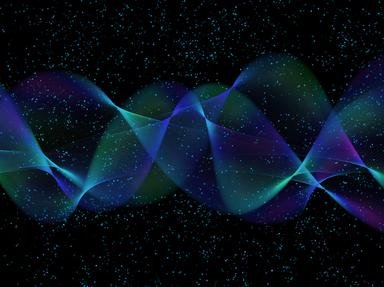Quiz Answer Key and Fun Facts
1. Most of the advancements in quantum physics arose from physicists trying to understand the nature of this very common form of energy. Which form of energy was postulated to have a dual nature, comprising of waves and particles?
2. Who famously postulated the equivalence between momentum and wavelength, essentially stating that every particle has an associated wave nature?
3. Popularly known as the EPR paradox, the discussion over the nature of quantum 'quirks' such as entanglement led to a series of debates between which famous scientists?
4. Among all the quantum 'quirks', this one is the most basic. Which property of a subatomic particle is seen to possess an inherently quantum nature, implying that classical laws cannot explain this property?
5. Which is NOT one of the four quantum numbers used to describe an electron?
6. One of the fundamental properties of quantum physics is the superposition of states. Which animal did Schrodinger use in his famous thought experiment to demonstrate this principle?
7. What is the fundamental unit of energy, with regards to light?
8. As a symbol of the smallest unit of energy, which of these plays a pivotal role in quantum physics?
9. The discovery of quantum physics led to the subsequent discovery of what phenomenon in electronics and material science, leading to the invention of sophisticated electron microscopy and microwave solid state devices, among others?
10. As a proof of the successful applications of quantum physics, which multinational organization 'scribed' its name using atoms posing as the world's smallest advertisement?
Source: Author
saivenky30
This quiz was reviewed by FunTrivia editor
rossian before going online.
Any errors found in FunTrivia content are routinely corrected through our feedback system.

